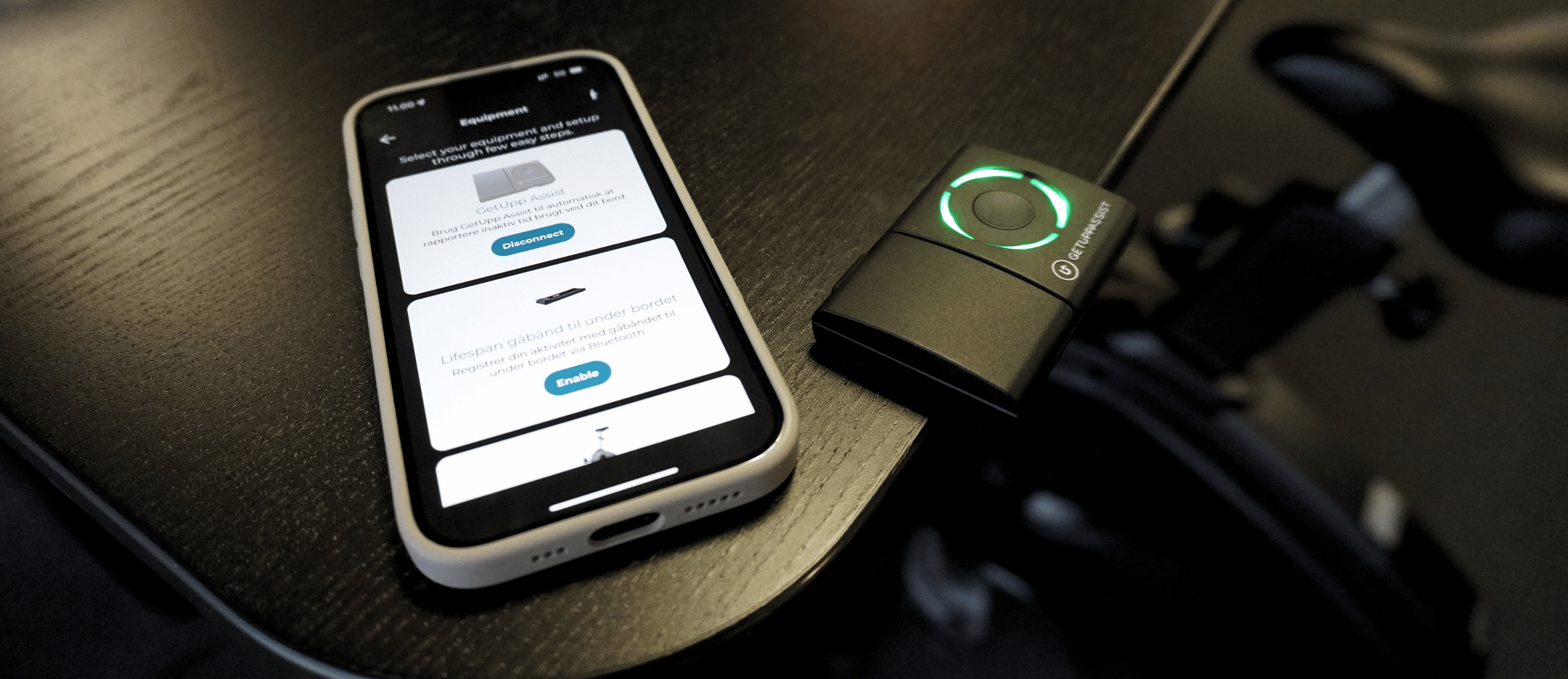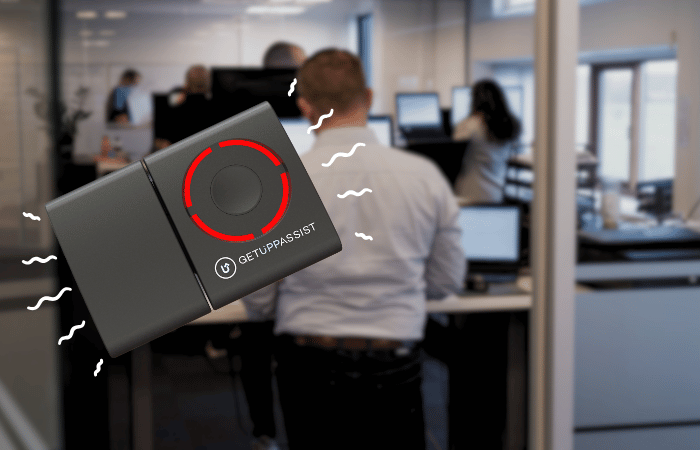Nudging
Helping you succeed through behavioural design and nudging

We'll give you a gentle nudge in the right direction
As part of our concept development, we have drawn on several theories within today’s understanding of human behavior and rationality – or lack thereof.
You can read more about that on this page, as well as how GetUpp Assist can be your personal helper to get you up and moving.

What is nudging?
In short, nudging is a method of influencing human behaviour and creating behavioural change. This is achieved by designing the recipients’ decision context to influence their decisions or behaviour in a predictable direction. The decision context is understood as the place or moment where the recipient has to make a decision and act on the decision.
In this way, nudging helps to guide and shape our choices in a given situation and the method aims to influence our behaviour in a certain direction that is appropriate for both the sender and the recipient.
Nudging is often thought of as “a gentle push in a certain direction”.
The basic idea of this method is that it is easier to change our surroundings than our attitudes and thought patterns to make us perform a certain action.
Nudging and behavioral design are based on an evidence-based method to create behavioral change – a method that is based on more than 40 years of research in psychology and behavioral economics.
Behavioural design and the theory behind it
Traditional economic theory is based on the assumption that we humans are rational and always make decisions based on a well-founded and rational decision context. However, this is by no means always the case.
In contrast, the last 40 years of research in behavioral economics and psychology build on a scientific understanding of how we as humans make decisions and act. It has proven how due to our psychology we do not always act rationally.
Because we’re just people. Real people.
One of the assumptions in traditional economic theory has been that the individual’s knowledge and will, go hand in hand with the person’s behavior. That is that if we know it and we want it, then we do it.
But do we really do that?
Do we eat healthier, exercise more, and drink less alcohol simply because we know it is healthy and because we want to?
No, right?
There is a large amount of evidence that we humans have cognitive limitations, habits, etc., which make us prone to make irrational decisions and act unpredictably rather than act rationally. It has been shown that there is a much weaker connection between knowledge, intention, and our final behavior than previously assumed.

Nudging and the GetUpp Assist
If you want to help someone perform a certain action, you have to make it easy for them.
That’s why we’ve developed a piece of technology we call GetUpp Assist. It is designed to make it easy for you to remember to get up from your office chair during your workday.
GetUpp Assist is a small device you put on the side of your height-adjustable table that nudges you to stand up.
Once you’ve installed GetUpp Assist, all you have to do is follow its little reminders throughout the day. You can pre-define the total time you want to be standing up each day. With an LED light indicator and a small vibration, GetUpp Assist will then remind you when it’s time to stand and when you should sit down again.
But why is it that GetUpp Assist can help you get out of your office chair every day? Why are these reminders so effective?
They are, as I said, because we humans have habits, biases, and cognitive limitations in motivation, memory, and attention. That’s why we don’t always remember and do what we want.
And if you think about your everyday life, you know this very well. That’s why we put the scarf in the jacket sleeve so we don’t forget it, or put the vitamin pills by the breakfast bowl to remember to eat them every morning.
We, therefore, nudge ourselves with all kinds of reminders during the day, because they act as a helping hand for our limited resources in both motivation, memory, and attention.
The GetUpp Assist can become your personal helper at work, so you can create a working day with more variety and movement.


Why intentions are not enough to carry out the desired action
One of the most important factors in whether our intentions lead to the desired action is our motivation.
Motivation comes in waves. For example, one day we might be motivated to start running, but the next day we’re not so motivated.
However, there are many psychological factors other than our limitations in motivation that influence whether our intentions are carried out.
In fact, we have limitations in our memory – so we might forget to go for a run. And we have limitations to our attention – so perhaps our attention just gets caught by something other than that jog. And we have limited resources in terms of self-control and willpower to carry out our desired actions.
In addition, as I said, we also have limited rationality, which i.a. is due to our cognitive bias. Furthermore, we have habits that influence our decisions and behavior. Finally, there is social influence, which explains how our behavior is influenced by what others do.
These are just some of the reasons why our intentions do not always lead to the desired action.
Thus, man’s limited rationality can help to explain why our good intentions do not always come to fruition.
So it is therefore quite normal that the intended run does not always come to fruition, even though you know it would be healthy and that you also have intentions to lace up your running shoes. There are habits, biases, and cognitive limitations in motivation, memory, and attention which stand in the way of getting started.
This is where nudging can be the perfect solution! Nudging can help you give good intentions a loving push.
